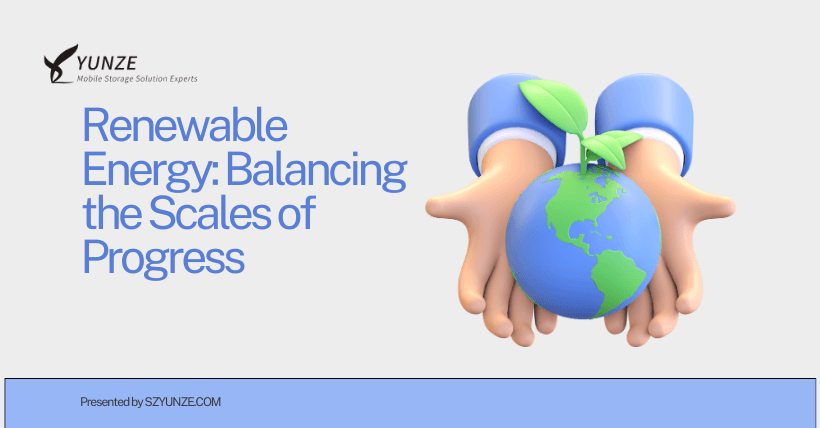I. Introduction
Renewable energy has emerged as a beacon of hope in the pursuit of sustainable and environmentally friendly power sources. The widespread attention it garners is undeniable, as it offers a promising alternative to traditional fossil fuels. However, this shining eco-friendly armor is not without chinks. In this article, we’ll delve into both the advantages and disadvantages of renewable energy, shedding light on this multifaceted topic.
II. Advantages of Renewable Energy
2.1 Renewable and Endless
One of the most compelling advantages of renewable energy sources, such as solar, wind, and hydropower, is their perpetual nature. These sources draw energy from the natural elements – the sun, wind, and water. As long as our planet exists, these sources will continue to provide an endless supply of energy for humanity. This reliability ensures a sustainable energy future.
2.2 Environmentally Friendly
Renewable energy sources are champions in the fight against environmental degradation. They generate minimal waste during their operation, leaving a considerably smaller carbon footprint compared to their non-renewable counterparts. This attribute plays a vital role in mitigating global warming and other environmental concerns, making renewable energy an environmentally friendly choice.
2.3 Economic Benefits
As technology advances, the economics of renewable energy become increasingly favorable. While the initial setup costs can be substantial, the long-term operational expenses are relatively low. Moreover, the growth of the renewable energy sector creates job opportunities, contributing to economic growth. This not only benefits the planet but also provides a significant boost to local economies.
III. Disadvantages of Renewable Energy
3.1 Instability
The Achilles’ heel of renewable energy lies in its vulnerability to weather and seasonal changes. Solar and wind energy, in particular, depend on environmental conditions. Unfavorable weather or seasonal shifts can significantly affect energy production, making it challenging to provide a consistent and reliable power supply on a large scale. This is a hurdle that needs to be overcome to harness the full potential of renewable energy.
3.2 High Investment Costs
While the operational costs of renewable energy are relatively low, the initial investment required for infrastructure development can be substantial. Building solar power plants and wind farms demands a significant financial outlay, which can be a deterrent for both governments and private investors. Lowering these costs is essential to make renewable energy more accessible.
3.3 Geographic Limitations
Not all regions are created equal when it comes to harnessing renewable energy. Different types of renewable sources have specific geographic requirements. For example, wind power generation necessitates a stable wind source, while solar power generation relies on ample sunlight. This limitation means that some areas may not be suitable for certain renewable energy projects, restricting their global applicability.
IV. Conclusion
In conclusion, renewable energy is a promising and environmentally friendly solution to the world’s energy needs. Its endless supply, minimal environmental impact, and economic benefits make it a compelling choice. However, it’s essential to acknowledge the challenges it faces in terms of weather-dependent energy production, high initial costs, and geographic limitations. As technology advances and solutions are developed, these disadvantages may be overcome, and renewable energy can play a more prominent role in our sustainable energy future.
V. Frequently Asked Questions
5.1 What are the most common sources of renewable energy?
Renewable energy sources include solar, wind, hydro, geothermal, and biomass energy. These sources harness natural elements to generate power.
5.2 How does renewable energy impact the environment?
Renewable energy has a minimal environmental impact, producing fewer greenhouse gas emissions and pollutants compared to non-renewable sources. This helps combat climate change and reduce air and water pollution.
5.3 What technologies are advancing the renewable energy sector?
Advancements in energy storage, grid integration, and more efficient solar and wind technologies are driving the growth of the renewable energy sector.
5.4 Are there government incentives for renewable energy adoption?
Many governments offer incentives such as tax credits, rebates, and subsidies to promote the adoption of renewable energy, making it more accessible for businesses and homeowners.
5.5 How can individuals contribute to the growth of renewable energy?
Individuals can support renewable energy by installing solar panels, using energy-efficient appliances, and advocating for renewable energy policies. Small actions collectively make a big difference in the transition to cleaner energy sources.
Related:
- Energy Drain in Chip Production: What You Should Know
- Arm: What’s Happening in the AI Chip Industry?
- Unlock the Success Formula for Chips in the AI Era Today
- Cut Data Center Energy Costs with These 8 Methods
- Energy Use by Google & Microsoft Exceeds 100+ Nations
- Arm: Collaborating for a Greener, More Sustainable Tomorrow
- $35 Billion AI Data Center in South Korea: A 2025 Launch

Disclaimer:
- This channel does not make any representations or warranties regarding the availability, accuracy, timeliness, effectiveness, or completeness of any information posted. It hereby disclaims any liability or consequences arising from the use of the information.
- This channel is non-commercial and non-profit. The re-posted content does not signify endorsement of its views or responsibility for its authenticity. It does not intend to constitute any other guidance. This channel is not liable for any inaccuracies or errors in the re-posted or published information, directly or indirectly.
- Some data, materials, text, images, etc., used in this channel are sourced from the internet, and all reposts are duly credited to their sources. If you discover any work that infringes on your intellectual property rights or personal legal interests, please contact us, and we will promptly modify or remove it.



